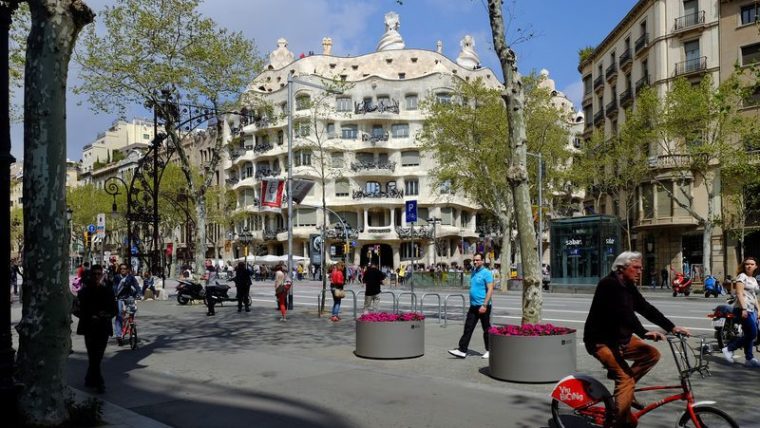The new usage plan for L’Eixample seeks to preserve local commerce and residents
The main aim is to preserve the identity of the district, the daily lives of people who live there and the balance between the different types of businesses in an environment which is set to undergo a major transformation in the next few years, with the implementation of the Barcelona Superblock plan.
The measures seek to prevent a monoculture of activities mainly linked to the restaurant sector and tourism, making economic activity and housing compatible and boosting the creation of commerce linked to local people’s daily needs.
To achieve this, the new usage plan sets out three types of establishments (activities which imply members of the public such as restaurants and music activities, food shops and establishments linked to tourist activity), regulating the maximum number of them, the distance between the same types and the maximum and minimum floor spaces.
For instance, music and audio-visual activities will only be allowed in streets wider than 25 metres and must be separated by a distance of at least 400 metres, Similarly, bars and restaurants must be at least 50 metres apart and have no more than 800 square metres of floor space in streets over 20 metres wide. No activities linked to the display of pornography will be allowed.
Usage plan in Carrer de Girona
The model to follow is the one applied in one of the first green streets to be created in the district: Carrer de Girona. This was approved at the start of 2020, before the tactical project to create more pedestrian space and at a point when restaurant and leisure activities had still not increased there. Since then, commercial activity has grown in an orderly fashion, without generating negative impacts or saturation.
Transformation of L’Eixample
June will see work begin on the first four green streets and four squares in L’Eixample, as part of the Barcelona Superblock plan. Between now and 2030, the number of projects of this type should steadily grow to a total of 21 streets and 21 squares. This will lead to street-calmed spaces with priority for pedestrians, favour journeys on foot and by bike, plus new meeting spaces for civic uses at a neighbourhood level.
The district of L’Eixample currently has nearly 30% of all the commercial premises in the city used for restaurant activities, with 3,279 such establishments in all. The district has 14,416 commercial premises all together, of which 27% correspond to bars and restaurants, supermarkets, food shops, convenience stores and music activities.
The project will now be submitted to public scrutiny for a period of two months and a participatory process conducted to gather input from local people, organisations and political groups, ahead of its final approval.








